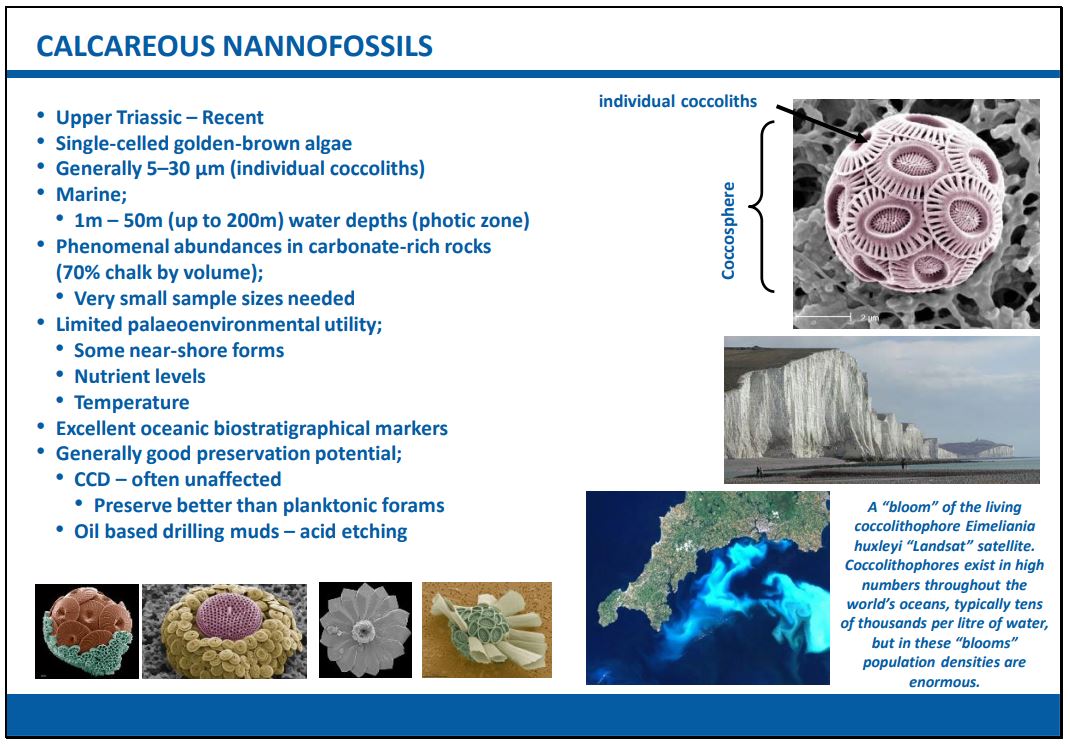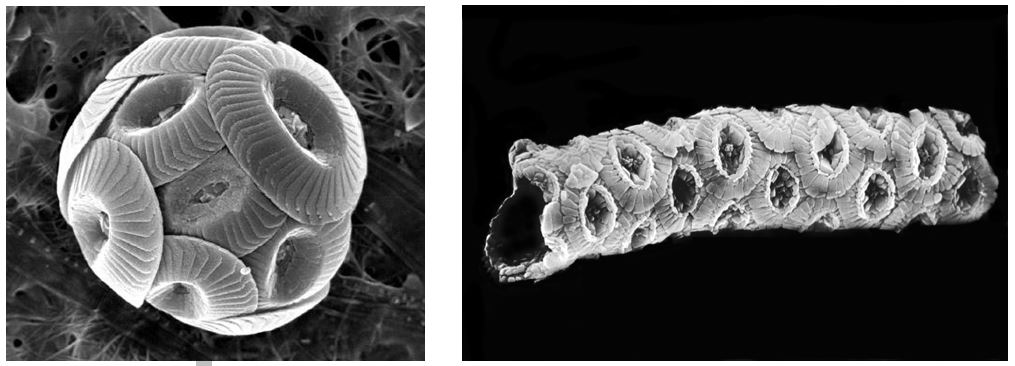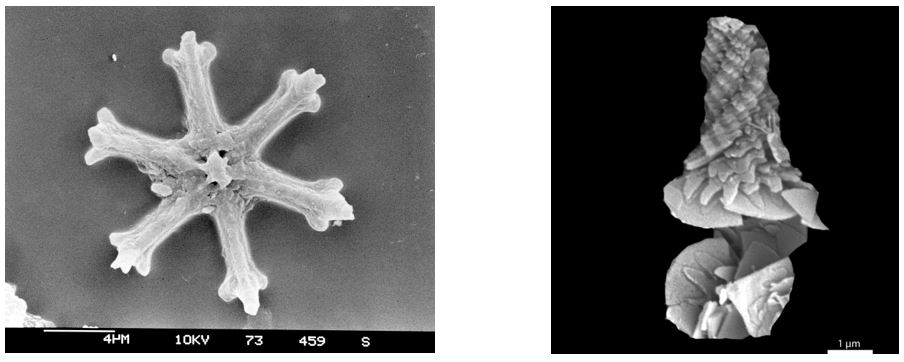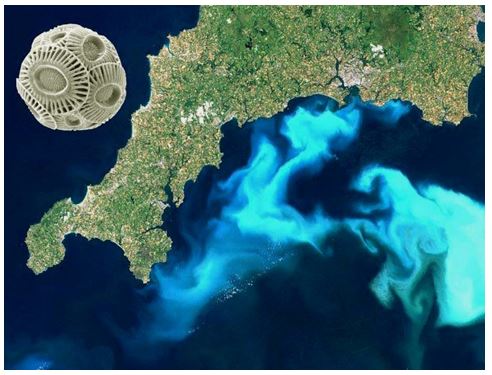Table of Contents
Calcareous Nannoplankton ("Nannofossils")
The term “nannofossils” refers to a group of organisms of a size which require the use of a high-powered microscope capable of magnifying around 1000-1500x. Most fossil specimens are around 2-20 microns in size. They are normally examined in thin section preparation by transmitted light with polarisers and a “slow wave” plate.
Although other “rock-forming” fossils are known, nannofossils are by far the smallest, yet are responsible for several thousand metres of chalk thickness across much of the planet in Cretaceous times.
The processing of nannofossils for examination normally involves the sediment being mixed with water and spread or ‘smeared’ onto the surface of a microscope slide, dried and then covered with a coverslip attached with an optical adhesive. There is a standard preparation method, but most nannopaleontologists have their own adaptations for coping with the variety of lithologies that they encounter at wellsite.

The term “nannofossils” encompasses a wide range of plant derived fossils which have (a) a common size and (b) significant geological utility. These may include coccoliths, nannoconids, pentalithssphenoliths, discoasters and even calcareous dinoflagellate cysts. However, coccoliths, nannoconids and discoasters are the predominant types found in this particular group. Their characteristics are:
- Single-celled plants (probably Haptophyte algae, but opinion is divided over assignment to other plant phyla)
- Coccoliths are generally rounded or polygonal and flattened, discoasters are stellate in shape and became extinct at the end of the Pliocene, nannoconids are minute and cone-shaped constructed by closely packed calcite wedges in a spiral
- All with intracellular generated calcareous ‘plates’, extruded and locked together externally to form spheres or rarely, cylinders (usually broken into individual coccoliths/nannofossils in the fossil record.

Coccoliths (the small, disc-like components) can lock together to form spheres and tubes.

A discoaster (left) and a nannoconid (right). Discoasters have mainly 5 and 6-rayed forms but forms with 8 rays and more are known.
- Planktonic: they inhabit the photic zone (top 50m) of almost all marine habitats but predominantly over the shelf. Currently living in all oceans in such vast numbers during blooms that they can be seen from space.

A coccolith bloom (of the species Emiliania huxleyi) off the Cornish Peninsula, southwestern UK.
- They were the top primary producers in Mesozoic oceans although after the K-T extinction many of their niches are now occupied by the diatoms (the primary producers in Cenozoic and today’s oceans) and they are less diverse than in the Mesozoic.
- Biostratigraphically very significant and becoming more so as research provides increasingly more detailed subdivision of stratigraphic intervals.
- Geologic range: Late Triassic to Recent (“extant”)
- Good preservation, their small size makes mechanical damage caused by drilling unlikely. This is also a disadvantage as they are easily reworked. Their size also makes them difficult to remove from drilling muds, so contamination can be problematic, especially if a mud is saved at the completion of drilling a well and re-used in a new well.
- Very large numbers of individual coccoliths are regularly preserved in very small quantities of sediment therefore a single cutting may be large enough to produce statistically valid results.
- Because of dissolution of calcium carbonate at depth in sea water (carbonate compensation depth (CCCD), preservation is compromised in deep water sediments.
